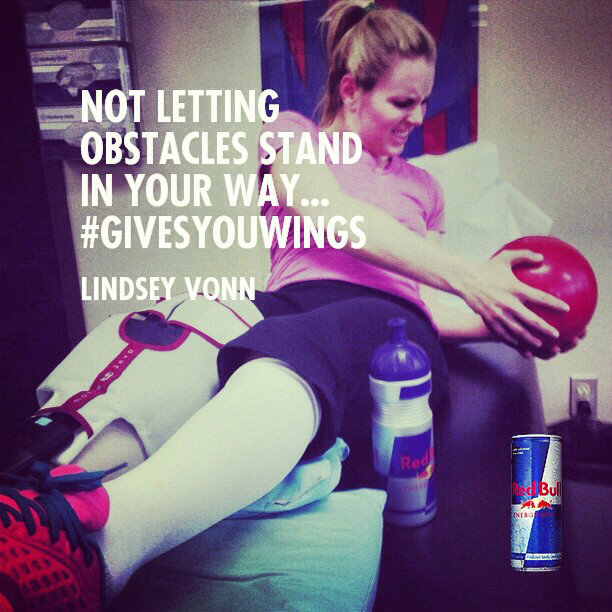Torn ACLs get a lot of airtime on ESPN because of the injury’s devastating effects on an athlete’s ability to get back in the game quickly.
The ACL or Anterior Cruciate Ligament is one of the four major ligaments in the knee. The ACL is located deep in the knee and can lead to debilitating injury because it is a crucial stabilizer for rotation and forward movement of the knee.1 Non-contact tears are the most common form of ACL injuries, especially in sports such as skiing, soccer, football, basketball, wrestling, and gymnastics. 2 If surgery is required, intensive rehabilitation during physical therapy is performed and athletic activity can usually be resumed three to six months after ACL reconstruction. 3
One recent victim of a show-stopping ACL injury was 2010 Olympic gold medalist Lindsey Vonn. (Warning: This video is almost painful to watch.)
In February of this year Lindsey tore her ACL at the Alpine World Championships in Austria. Determined to compete in the 2014 Olympics, rehabilitation has been her top priority since the accident. Seven months later, she is finally training again.
 Red Bull
Red Bull✔@redbull
Not letting obstacles stand in your way… #givesyouwings @lindseyvonn http://win.gs/share
115
Twitter Ads info and privacy
Recent research findings with regard to ACL rehabilitation:
- Introduce closed kinetic chain as early as possible. Closed what?! It’s when your foot stays in contact with the ground when performing a leg exercise. An example would be a mini-squat versus an exercise where your leg leaves the ground. The key is to keep the motion very limited, slow, and controlled. 4
- Choose a provider that uses specific testing and criteria for safe return to sport. 5 A group of tests known as “battery tests” or single leg hops has been recommended to determine how safe it is to resume athletic activity.
- Prevention and strength training is key, especially for females. Women are 10X more likely to injure their ACLs, especially in a non-contact way. 6
- Sportsmetrics has gained a lot of popularity for its prevention of ACL injuries. 7 Sportsmetrics is a six-week evidence-based prevention program performed in the off-season. Sportsmetrics is the only research-based prevention program to support reduction in ACL injury.
For more information on Sportsmetrics, email me at , or visit www.sportsmetrics.org.
For more information on the ACL visit: www.sptny.com/blog/?p=869
References:
1 Knee Injury, Soft Tissue at emedicine
2 Dr Langran “Alpine Ski Injuries”, skiinjury.com, December 5, 2010
3 http://www.ehelathmd.com/librray/acltears
4 Escamilla RF. Toran DM. Wilk KE. Paulos L. Andrews JR. Anterior Cruciate Ligament Strain and Tensile Forces for Weight-Bearing and Non-Weight-Bearing Exercises: A Guide to Exercise Selection. JOSPT 42(3); 2012 (208-220)
5 Gustavsson A, Neeter C, Karlsson J, et al. A test battery for evaluating hop performance in patients with an ACL injury and patients who have undergone ACL reconstruction. Knee Surgery, Sports Traumatology, Arthroscopy: Official Journal Of The ESSKA. August 2006;14(8):778-788.
6 Noyes FR, Westin SDB. Anterior Cruciate Ligament Injury Prevention Training in Female Athletes: A Systematic Review of Injury Reduction and Results of Athlete Performance Tests. Sports Health.4(1): 36-4
7 http://sportsmetrics.org/

